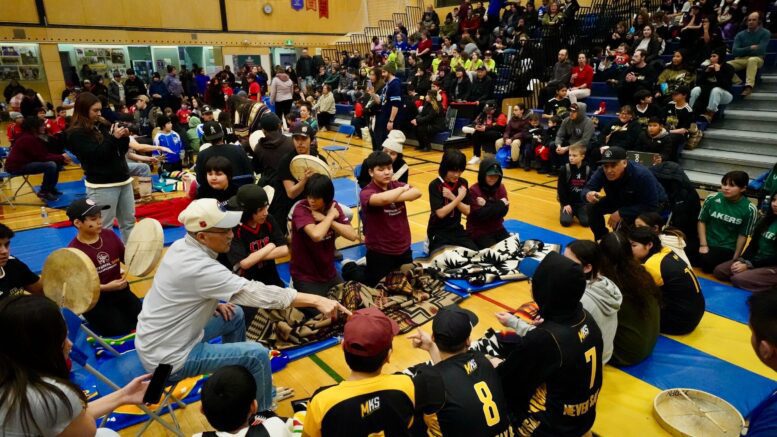A record 25 teams of youth athletes from 27 NWT communities – with the first out-of-territory team from Whitehorse, Yukon – gathered at Sir John Franklin High School in Yellowknife for a weekend of fun, competition, and teamwork.
Organized by Indigenous Sports Circle NWT, the Traditional Games Championships (TGC) allows youth between the ages of 10 to 12 to participate in eight Northern and Dene games, such as high kick, triple jump, stick pull, and snow snake. Although these games appear simple by rules, they require great strength, balance, agility, reflexes and strategies.
“All the games are connected to on-the-land skills to help you become a better hunter, trapper, or gather,” said Carson Roche, the event manager with Indigenous Sports Circle NWT. “Like the snow snake, they use this type of technique to hunt caribou before there is a gun.”
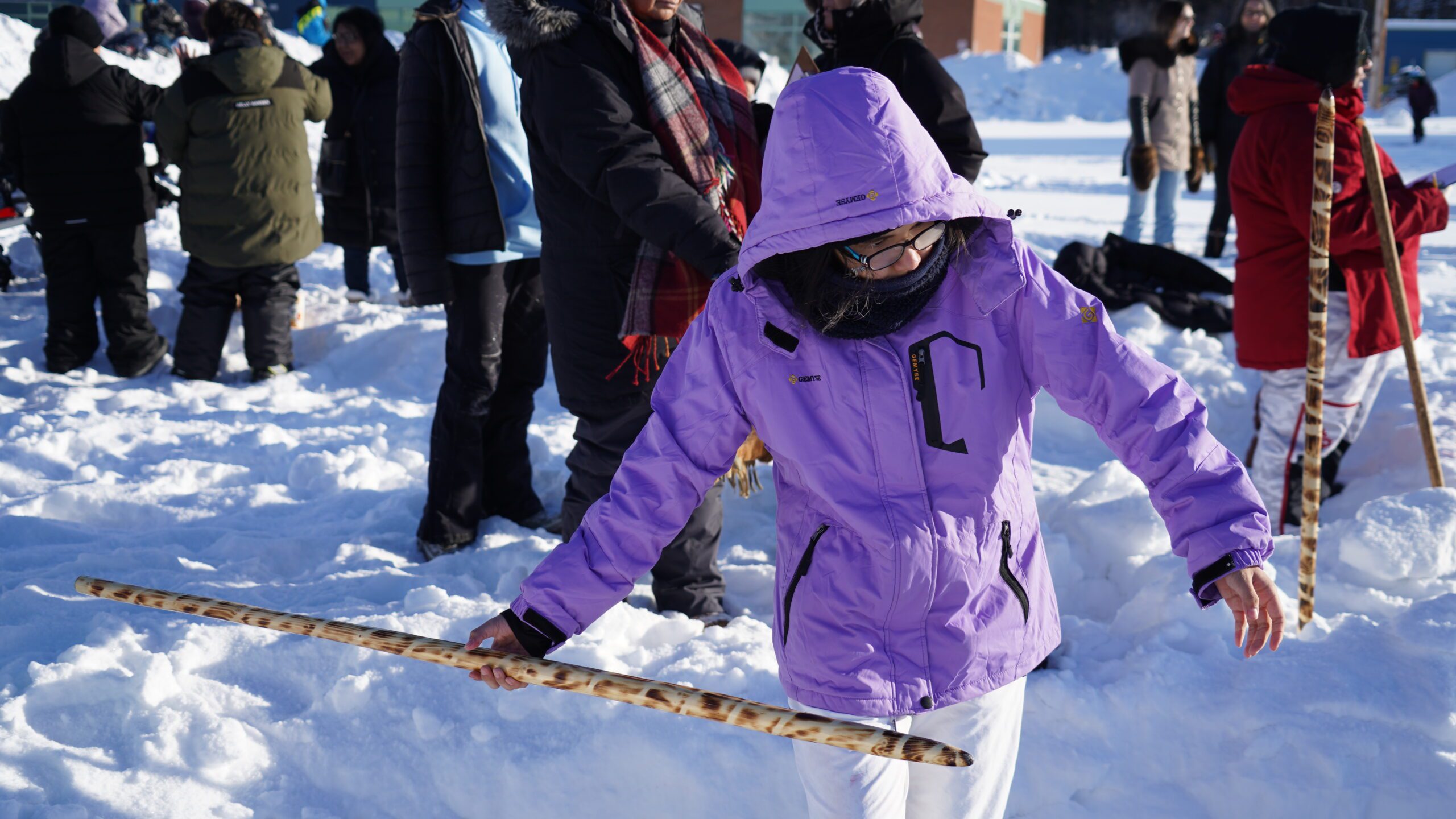
Snow snake is a traditional Dene game that teaches players how to hunt caribou by throwing a spear. This year’s highest record is set by Joseph Kelly from Chief T’selehye School in Fort Good Hope, 195 feet and 8 inches. (Josie Jiaxuan Wu/CKLB)
“The high kick teaches you how to be really stealth,” said Roche. “When you land, you got to land on your feet and try to be as quiet as possible, because when you’re out hunting seal, you don’t want to be too loud.”
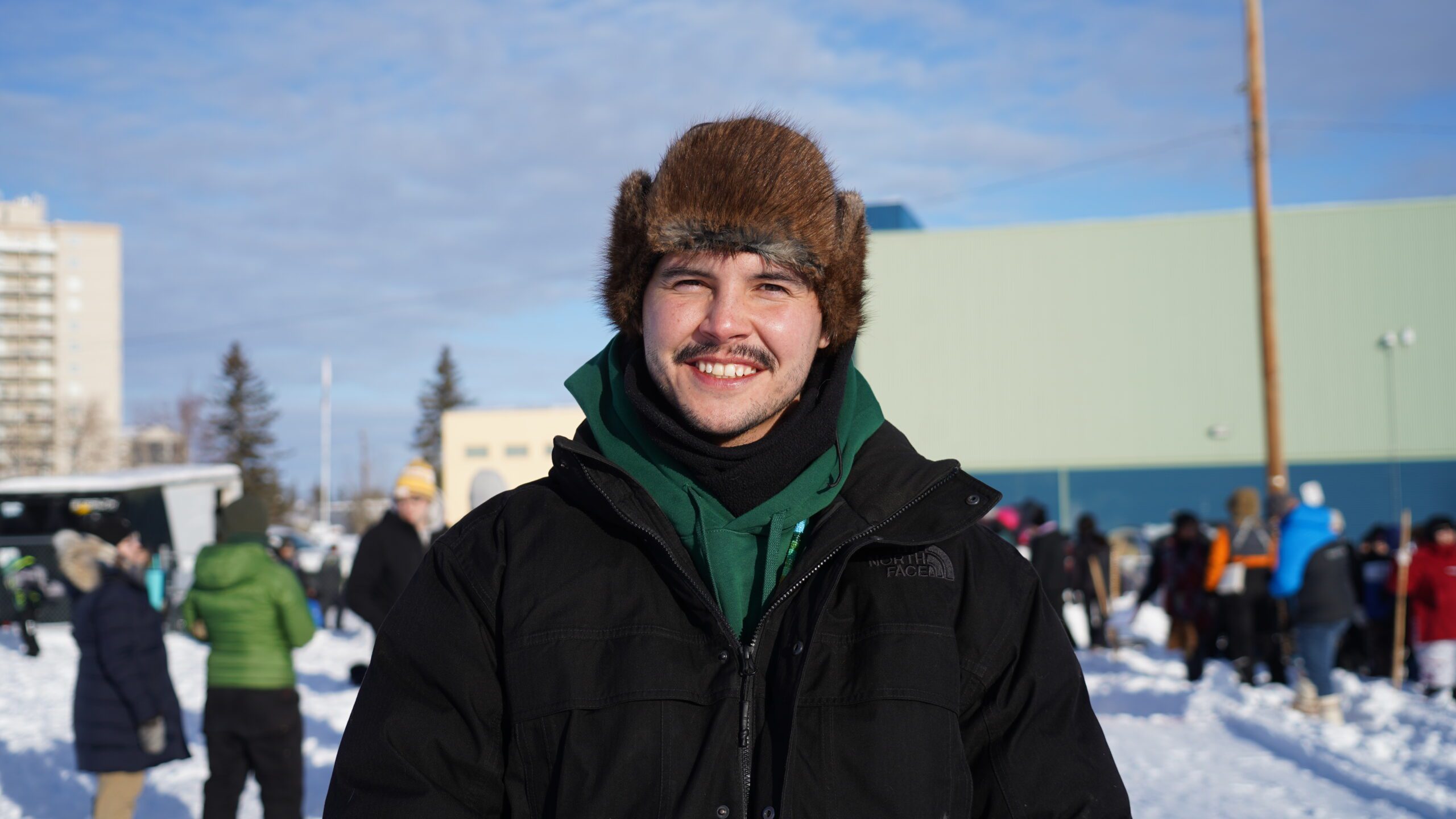
“This is my favourite event to host,” said Event Manager Carson Roche. “As soon as it’s over, I’ll be getting ready for the 2026 TGC.” (Josie Jiaxuan Wu/CKLB)
Growing up in Délı̨nę, Roche didn’t have many opportunities to play traditional games as a kid. When he started his role with the organization seven years ago, he found a love for Northern and Dene games and has since become keen to showcase and teach the games across the territory.
“The traditional games are very important to our people up in the North,” Roche said. “It’s good to share these games and bring all these communities and cultures together.”
Sachs Harbour’s first appearance
It’s the first time for students from Sachs Harbour’s Inualthuyak School to participate in the TGC.
“They didn’t have everything they needed, but the kids are so excited to be in this competition,” said Ibiye Dagogo, the teacher who brought the team to Yellowknife.
The school doesn’t have an official coach, and the students only get to practice three to four times a month when a coach travels from outside the community.
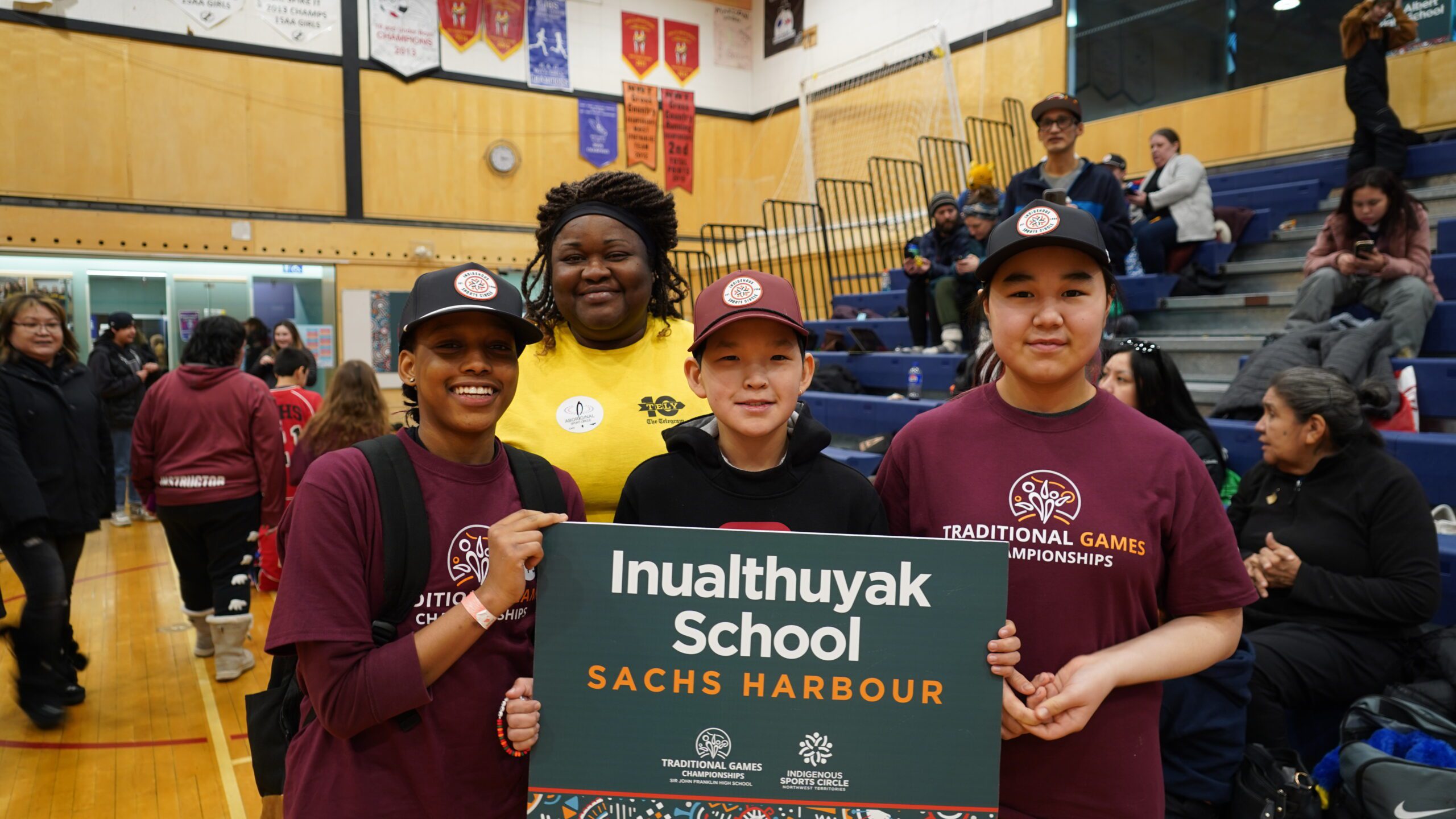
Dagogo (in Yellow shirt) with her team of three from Inualthuyak School, Sachs Harbour. (Josie Jiaxuan Wu/CKLB)
“I sense that definitely there will be a little bit of anxiety and uncertainty,” said Dagogo. “But coming here and interacting with other kids helped ease it out.”
Dagogo recalled the time when a girl from her team was struggling with reaching a certain height in two-foot high kick, the other teams started cheering and clapping for her.
“Then I saw her do that kick, that’s one of the highest I’ve seen her doing,” she said.
“There’s nothing to compare with that sense of teamwork, team spirit, and sharing one another’s victory,” said Dagogo, “That’s a valuable experience for them.”
‘We are Team Yukon!’
Isla Sageaktook, Kaylea Laluk-Hine, and Harlynn Germaine flew from Whitehorse, Yukon, to Inuvik, to Norman Wells, and finally arrived in Yellowknife after almost seven hours. But when they got off the plane, there was nothing but excitement.
“I feel really grateful for being able to come here and meet all these new people,” said Germaine.
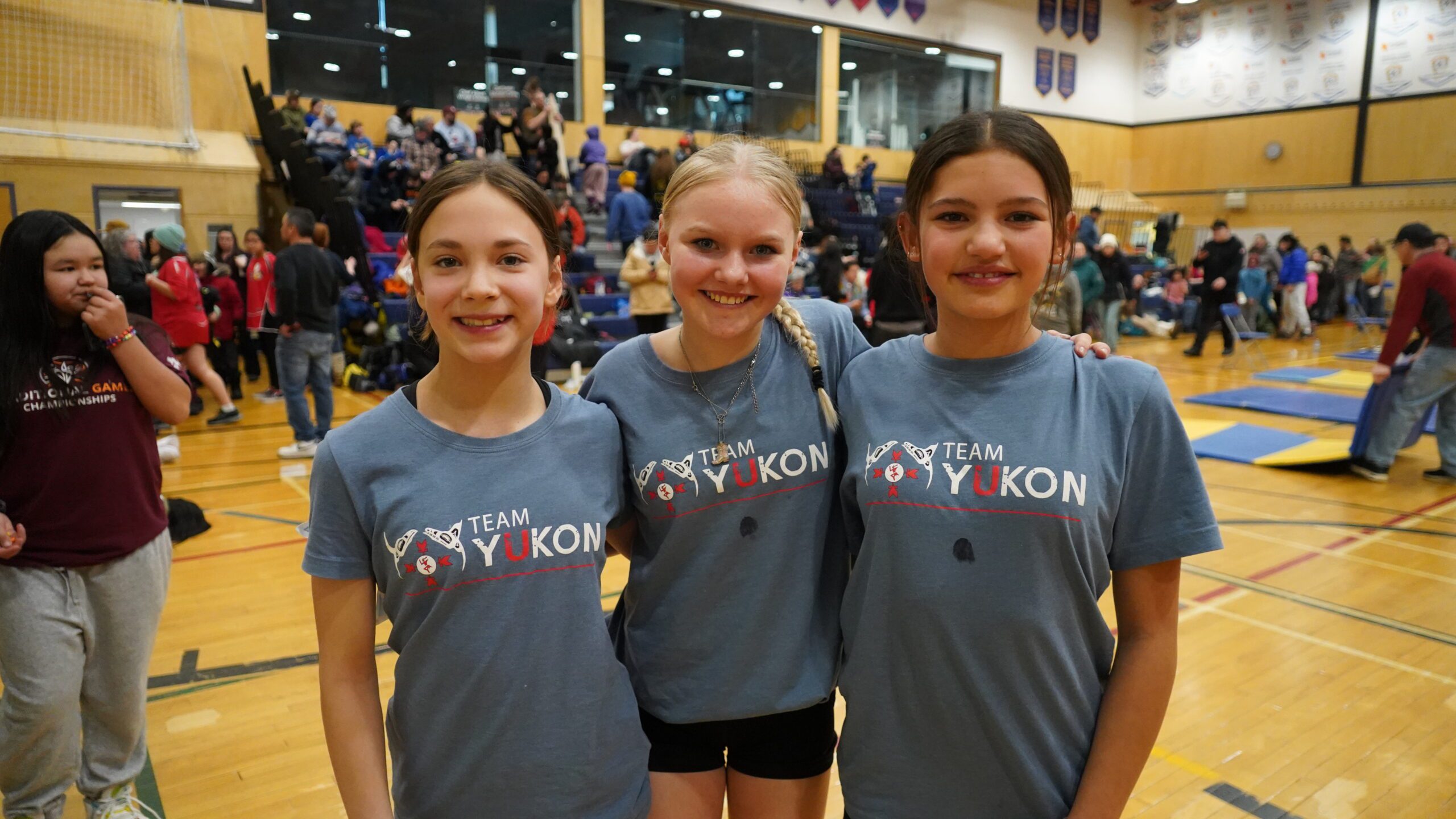
“It was fun doing all the games that our ancestors did, and learning about what they had to do to survive,” said Laluk-Hine. From left to right, Isla Sageaktook, Kaylea Laluk-hine, and Harlynn Germaine. (Josie Jiaxuan Wu/CKLB)
They are the first out-of-territory team to compete in the TGC. After months of training, the trio made a strong debut, each winning a gold medal – one in triple jump, wrist hang, and one-foot high kick.
“We’ve been training for a long time, and I feel like we really worked up to it,” said Sageaktook. She brought home a gold medal in one-foot high kick, a sliver in two-foot high kick, and a bronze in triple jump.
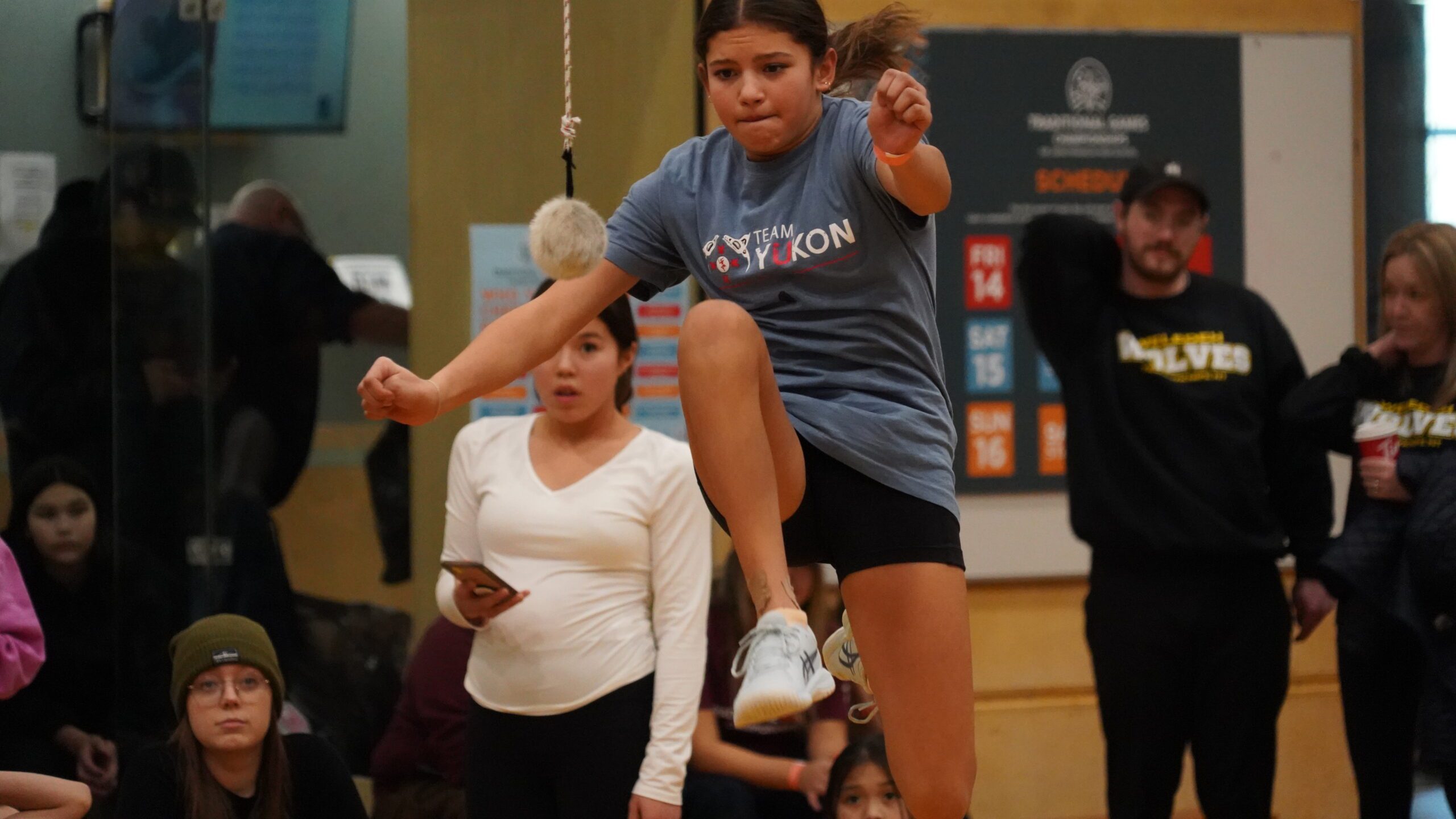
Harlynn Germaine competing in one-foot high kick. She received second place, reaching 5 feet 8 inches. (Josie Jiaxuan Wu/CKLB)
“Everyone is so kind here, you never feel like you’re competing against someone, you’re just competing against yourself,” said Sageaktook. “Even the crowd, sometimes they’ll clap for you, or they’ll go completely silent for you, it’s really cool.”
Germaine, who won the championship in triple jump, said the tournament is a great opportunity to train to achieve their dreams of becoming professional athletes.
The trio won’t be able to participate in the 2026 tournament because of the age limit, but they plan to compete in Juneau, Alaska, and keep practicing Arctic sports.
2025 TGC’s results
The 10th annual TGC wrapped up on Sunday evening, and the championship team went to Yellowknife’s Weledeh Catholic School.
École William McDonald Middle School, who is usually the championship team, took home second place, only two points behind the champion. Inuvik’s East Three Secondary School received a bronze.
It’s also a year of record-breaking, with over ten players set new records in snow snake. The highest record is set by Joseph Kelly from Chief T’selehye School in Fort Good Hope, 195 feet 8 inches.
Trent Wolki from Tuktoyaktuk’s Mangilaluk School made a new two-foot high kick for male players. He reached 5 feet 10 inches, surpassing the previous record of 5 feet 5 inches, set by Malkin Kudlak from the same school.
“I’d like to really thank the schools, parents, and chaperones, without them the kids wouldn’t be here,” said Roche. “We don’t have a cap for the team, and we hope every single school can come next year.”

